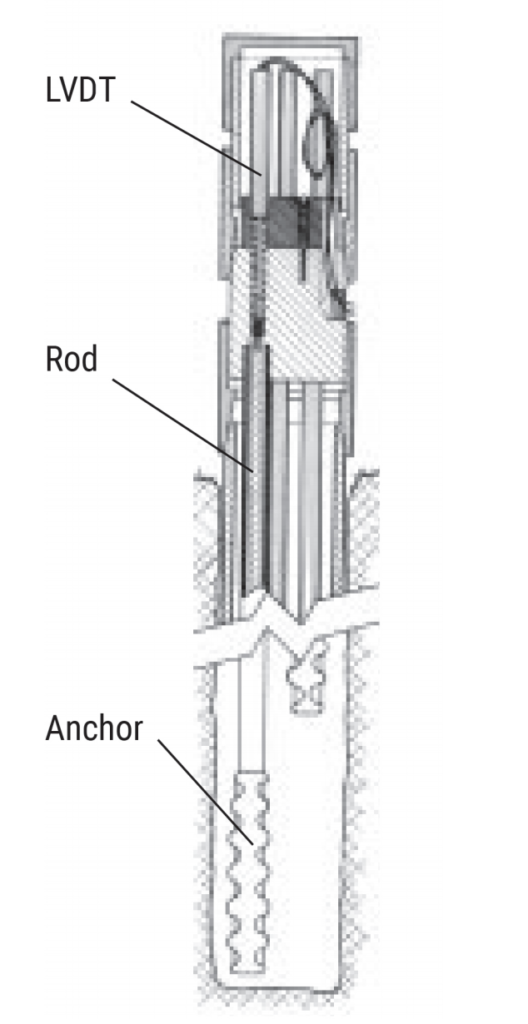LVDT Use in a Borehole Extensometer
A leading manufacturer of borehole extensometers currently uses several models from the Series 240 DC-DC LVDT for three different extensometer product lines. These devices accurately measure longitudinal or vertical displacements in rock masses and man-made boreholes. Typical applications include monitoring deformations around tunnels, mines and other underground excavations, settlement of structures, stability of natural and cut slopes and movement in dams and embankments. Occasionally, several extensometers are assembled in series to measure an extremely long deformation gradient.
One extensometer in particular is designed for measuring longitudinal displacements in numerous types of boreholes. It is comprised of a group of up to six fiberglass rods, individually sheathed in protective tubing and attached to an anchor. A reference head, located at the surface of the borehole, terminates the tubing. Movements of the anchor relative to the head result in changes in distance between the head and the free end of the rod. Installed in the head and connected to this rod, the DCDT precisely measures this change in distance caused by the motion inside the borehole. In addition, linear position data can be collected over a given period of time as the LVDT continues to monitor any material deformation.
Two other extensometers which contain our Series 240 are typically used to measure displacements between two points inside any type of man-made fill. This device is normally placed horizontally inside trenches up to 50 meters long. A rugged, low-cost version of these extensometers is easily installed in difficult locations, mostly in a vertical orientation.
As seen in the examples, the durable construction of the Series 240 makes this unit a perfect match for this application. Protected by an outer stainless steel housing, an extra level of sealing is achieved by carefully encapsulating the internal electronics and axial Teflon leads in a high grade epoxy resin. This production process – used for all of our LVDT’s – offers resistance to moisture and water intrusion often seen by extensometers in boreholes.
As many of our customers have found, the Series 240 DC-DC LVDT provides quality performance and long life, even when operated in adverse conditions. As a result, the end-user can be confident in this sensor’s ability to satisfy the linear feedback requirements for many applications.
EXTENSOMETER
